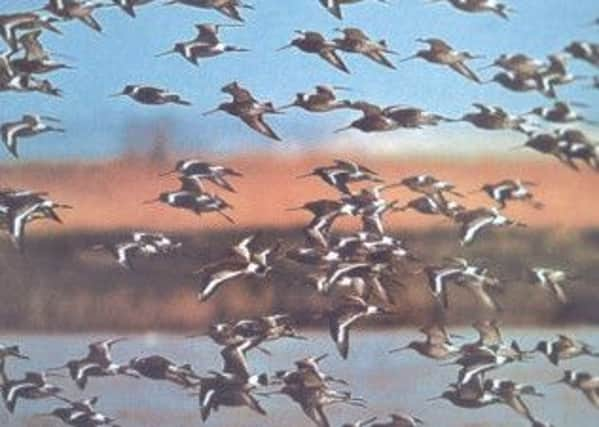Do you know thename for group of godwits?


Dame Juliana Berners collected the names in 1486 in The Boke of St Albans under the title The Companyes of Bestys and Foule.
Thus we have “murmuracion of stares” (starlings) which is today so well known and used by everyone whenever we are lucky enough to see those extraordinary holograms swirling in the evening sky at Brighton, or Rome airport, or the Somerset Levels as the birds prepare for bed.
Advertisement
Hide AdAdvertisement
Hide AdI cannot find the term for a group of godwits shown here and wonder if a reader knows? They look like a shoal of fish almost. They appeared as they always do every September down on the coast at Chichester harbour. These are black-tailed godwits as opposed to bar-tailed godwits which prefer the lower reaches of the harbour where there is more sand than mud.
They wheel in a tight flock back and forth then settle on the saltings meadows, or on the flooded freshes next to the sewage works at Apuldram. Sometimes I count 400 together. They have bred in Holland or even now in Norfolk on secure meadows. With them is a heard of curlews and also a spring of teal. A company of widgeon number 300 may also flight back and forth if they are disturbed by canoes, sailing boats, or pheasant shoot on the shore.
A colony of gulls come in from the plough in evening to wash and drink in the freshwater spring at Fishbourne. Sometimes I see a flight of one hundred dunlins there, flashing silver underbellies in the sun. On the high tied will be resting a paddling of ducks but if they fly they must be called a sorde or sute or even a badelynge if they are seen in summer when the birds are in eclipse (moult) when the Old English word baeddel is used meaning hermaphrodite.
What if I saw, in Norfolk or Holland, a number of bitterns together? To Dame Juliana they would have been a sege of bytourys. Later writers spelt this either sedge or siege, two totally different concepts. The bird looks like a clump of sedge so that would do for me.
Advertisement
Hide AdAdvertisement
Hide AdAlong the shores of Fishbourne creek as elsewhere in the harbour we often see trips of waders such as redshank and that sensible enough but what about a deceit of lapwings? Other plovers were known to the good Dame as a congrecation but she insisted a deseerte of lapwings was the correct spelling. This either means that the birds inhabit deserted wild places such as deserts, or that they pretend to fly away from their young that are flightless on the fields thereby drawing the enemy away.
Presently shelduck will return from the moulting grounds in Heligoland and then we shall have to brush up on their special group name: dopping. Behind them will be flying a wisp of snipe.
The whole collection of these wildfowl we must remember to call a plump. Fowlers of old would be amazed to see how many there are now in our harbours: plump on plump.